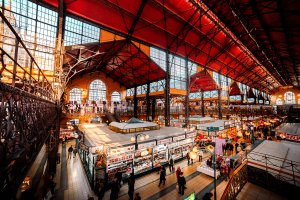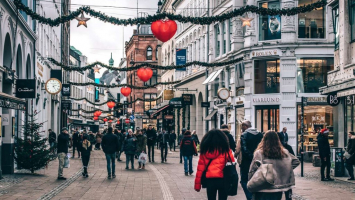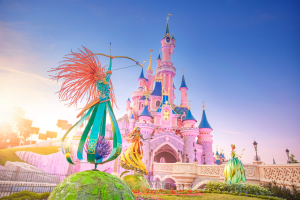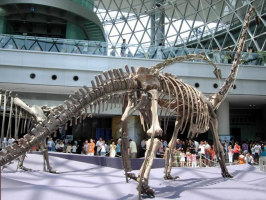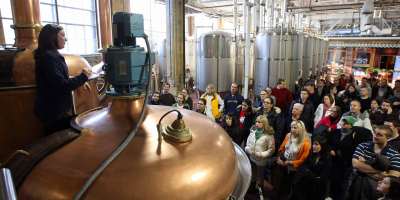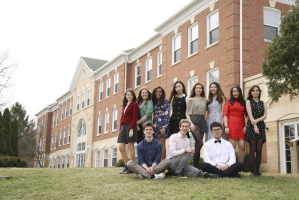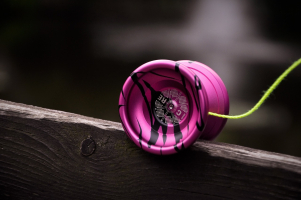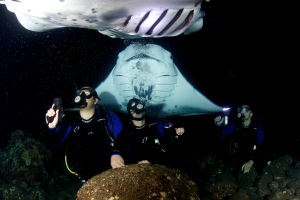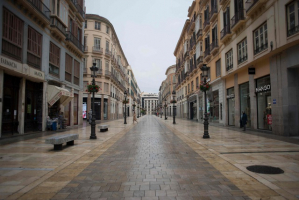Top 11 Best Botanical Gardens In The World
There's always something in bloom at the world's best botanical gardens, whether in the north or south, east or west. The astounding variety of flora on ... read more...display provides a haven for nature lovers as well as inspiration. Some botanical gardens also provide a cultural landscape that includes a rich variety of historic features, plantings, and buildings. Here are some best botanical gardens in the world you should visit.
-
The Singapore Botanic Gardens, one of the best botanical gardens in the world, is a 163-year-old tropical garden on the outskirts of Singapore's Orchard Road commercial district. It is one of three gardens to be designated as a UNESCO World Heritage Site, and the only tropical garden. Since 2013, the Botanic Gardens has been named Asia's top park attraction by TripAdvisor Travellers' Choice Awards. In 2012, it was called the inaugural Garden of the Year by the International Garden Tourism Awards.
The Agri-horticultural Society established the Botanic Gardens at their current location in 1859. When its first scientific director, Henry Nicholas Ridley, led research into the plant's cultivation in the early twentieth century, it played a vital role in the region's rubber trade boom. The National Orchid Garden, located within the central gardens, is at the forefront of orchid research and hybridization, complimenting the country's role as a major exporter of cut orchids. It has the world's largest orchid collection, with 1,200 species and 2,000 hybrids, because of the equatorial environment.
Early in the nation's independence, Singapore Botanic Gardens' expertise helped transform the island into a tropical Garden City, an image and moniker for which the nation is well recognized. Vanda Miss Joaquim, a hybrid climbing orchid, was named the country's national flower in 1981. Except for the National Orchid Garden, the Gardens are open every day from 5 a.m. to 12 a.m. and are free to enter. More than 10,000 flora species are dispersed across its 82 hectares (200 acres) of vertically stretched space; the longest distance between the northern and southern ends is 2.5 km (1.6 mi). The Botanic Gardens receives approximately 4.5 million visitors per year.
Date opened: in 1859
Location: Tanglin, Central Region, Singapore
Area: 82 hectares (202.63 acres)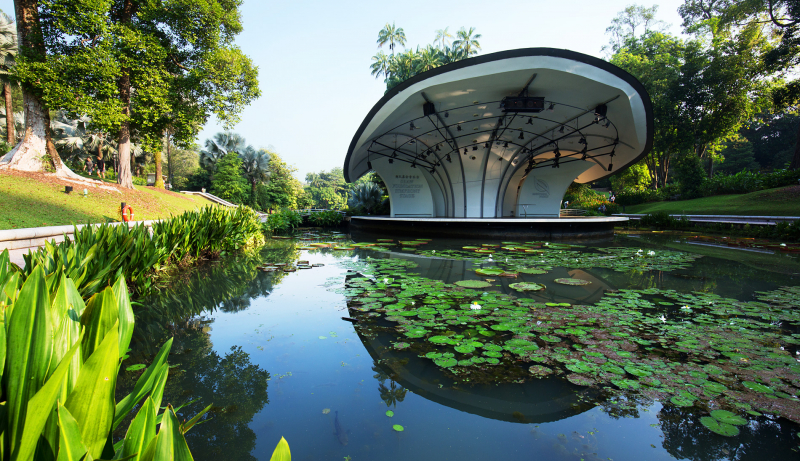
edition.cnn.com 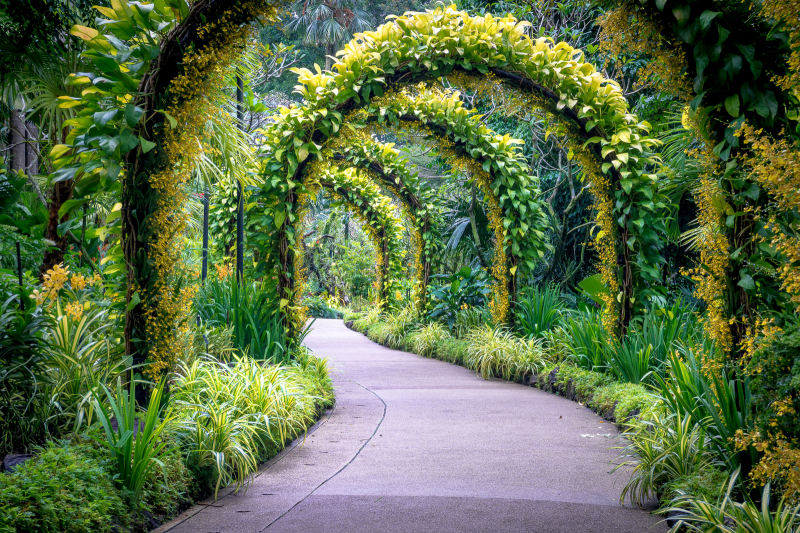
findawayphotography.com -
The Brooklyn Botanic Garden is a botanical garden in the New York City borough of Brooklyn. It was built on land from Mount Prospect Park in downtown Brooklyn, next to Prospect Park and the Brooklyn Museum, in 1910. The 52-acre (21-hectare) garden features over 14,000 plant species and receives over a million visitors each year. It features a number of specialist "gardens within the Garden," plant collections, the C. V. Starr Bonsai Museum, three climate-themed plant pavilions, a white cast-iron-and-glass aquatic plant house, and an art gallery.
As the city consolidated in 1897, legislation set aside 39 acres (16 ha) for a botanic garden, which opened in 1910. Originally known as the Institute Park, the park was operated by the Brooklyn Institute of Arts and Sciences, which contained the Brooklyn Museum, Brooklyn Children's Museum, and Brooklyn Academy of Music until the 1970s. The Brooklyn Botanic Garden debuted on May 13, 1911, with the Native Flora Garden being the first established portion.
In 1912, Harold Caparn was named landscape architect, and he designed the majority of the remaining grounds, including the Osborne Garden, Cranford Rose Garden, Magnolia Plaza, and Plant Collection, during the next three decades. That year, construction on the Laboratory Building and Conservatory began, and the structure was dedicated in 1917. McKim, Mead & White commissioned William M. Kendall to design the building in the Tuscan Revival style. It was declared a New York City Landmark in 2007 after being renamed the Laboratory Administration Building.
Founded: in 1910
Location: 990 Washington Avenue, Crown Heights, Brooklyn, New York 11225, United StatesLand area: 52 acres (21 ha)
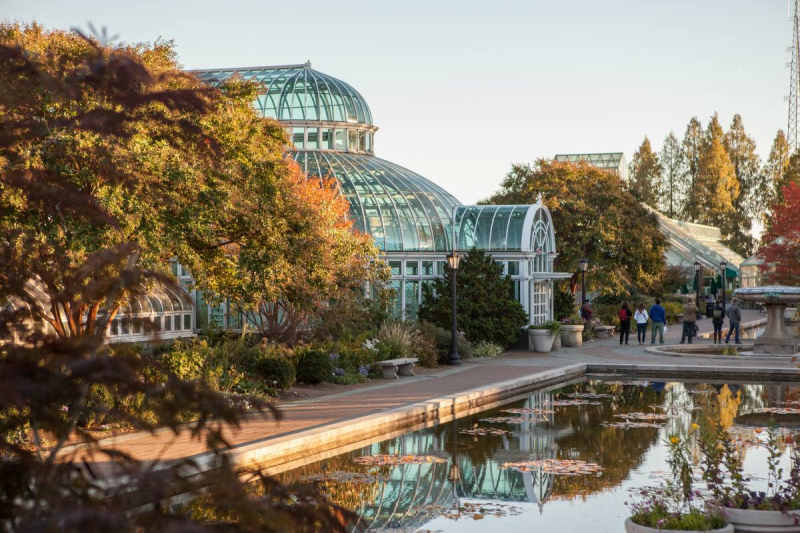
nycgo.com 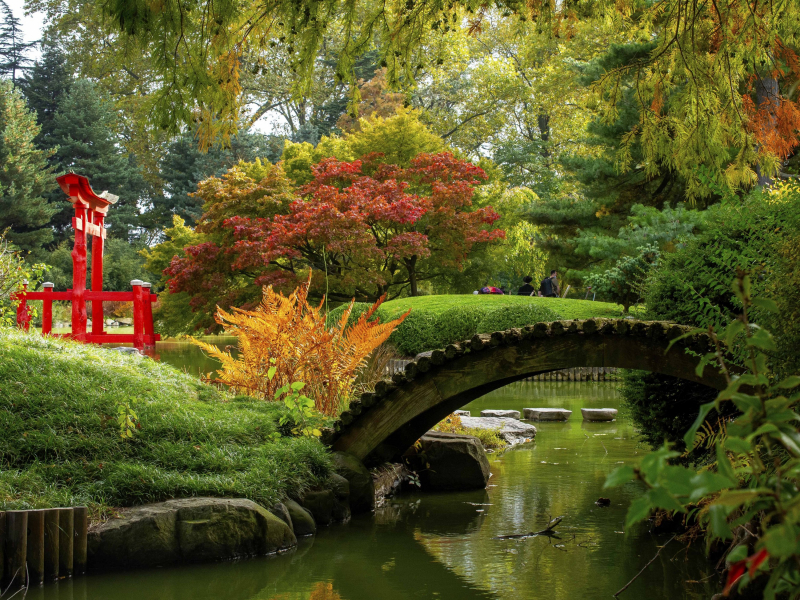
timeout.com -
The Kirstenbosch National Botanical Garden, one of the best botanical gardens in the world, is a significant garden in Cape Town, located at the eastern foot of Table Mountain. The garden is one of ten National Botanical Gardens in South Africa, representing five of the country's six biomes, and managed by the South African National Biodiversity Institute (SANBI). The institute was previously known as the National Botanical Institute until September 1, 2004.
Kirstenbosch lays a considerable emphasis on indigenous plant cultivation. Kirstenbosch was the world's first botanical garden with this concept when it was built in 1913 to preserve the flora native to South Africa's territory, at a time when invading species were not considered an ecological and environmental hazard.
The garden includes a large conservatory (The Botanical Society Conservatory) that displays plants from various places such as savanna, fynbos, karoo, and others. Outdoors, the emphasis is on plants endemic to the Cape region, with the stunning protea collections standing out. The ArbNet Arboretum Accreditation Program and The Morton Arboretum have accredited it as a level IV arboretum.
Created: in 1913
Location: Cape Town, South Africa
Area: 528 hectares (1,300 acres)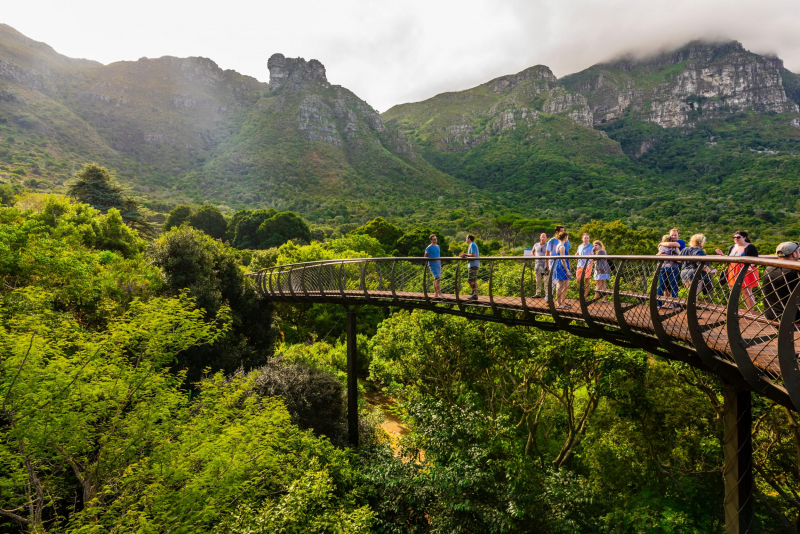
countrylife.co.uk 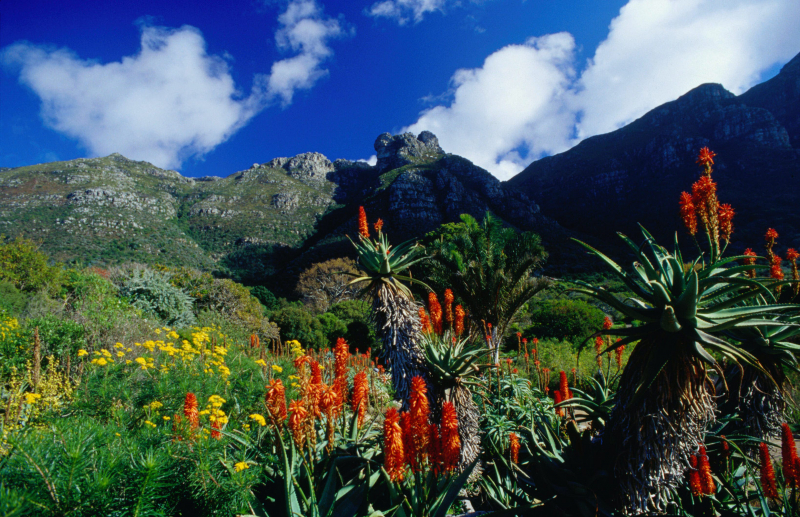
lonelyplanet.com -
The Arctic-Alpine Botanic Garden is the northernmost botanic garden in the world. It is administered by the Troms University Museum and is located in Tromsø, Norway. It first opened in 1994. Arctic and alpine species from all over the northern hemisphere can be found in the garden. The garden is located southeast of the University of Tromsø Campus, with views of the mountains to the east and south. There is no gate or barrier: there is no admission fee, and the garden is open year-round, all day and all night.
The location, which corresponds to Alaska's north coast, evokes images of a severe Arctic environment. A branch of the Gulf Stream sweeping up the coast of North Norway, however, has a moderating impact, and Tromsø has one of the mild winters - January average 4.4 °C (24.1 °F) and cool summers - July average 11.7 °C (53.1 °F). The Botanic Garden is open from the end of May to the middle of October. From May 15 to July 27, the sun is always above the horizon in Tromsø. This period of midnight sun compensates plants for the short growing season and low temperatures by providing an average of 200 hours of actual sunlight per month in May, June, and July. The sun never rises between November 21 and January 17. Snow usually covers the ground in October or November and lasts until the beginning of April. Snow then gradually melts, and the ground is normally bare by mid-May at sea level, while it can last far into the summer at higher elevations.
The Garden has 25 collections, including a newly established peonarium. Most of them offer outstanding species selections that you would have to look hard for elsewhere. The Arctic collection is centered on the highest hill. The Himalayas and South America are also significant. The Garden even has its own African collection, which includes plants that can withstand a Tromso winter without protection. Some collections are organized methodically by plant family, with saxifrages, primulas, and gentians having the most species. Above the red building is a big North Norwegian Tradition Garden with about 700 plants brought in from traditional gardens in North Norway.
Created: in 1994
Location: Tromsø, Norway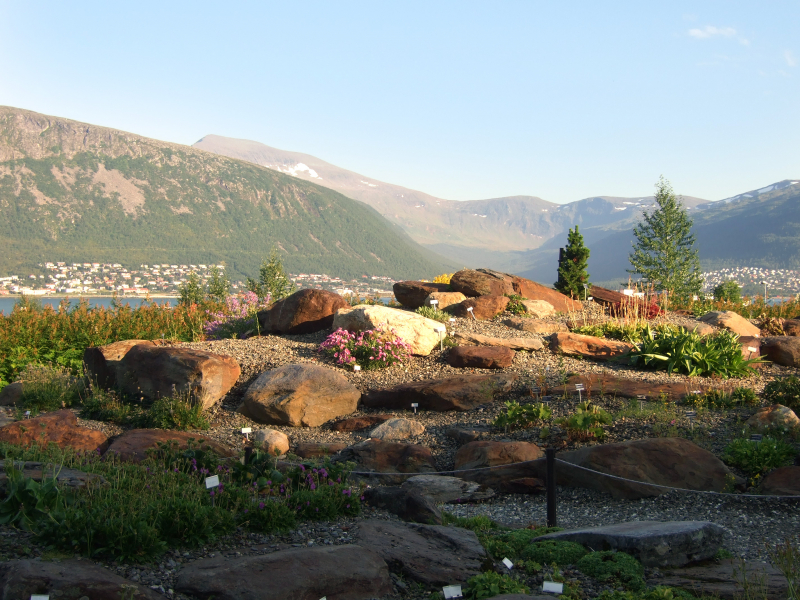
en.wikipedia.org 
brittarnhildshouseinthewoods.typepad.com -
The Montreal Botanical Garden is a major botanical garden in Montreal, Quebec, Canada, with 75 hectares (190 acres) of themed gardens and greenhouses. It was named a National Historic Site of Canada in 2008 because, due to the scope of its collections and facilities, it is regarded as one of the most important botanical gardens in the world.
The botanical garden is located in Maisonneuve Park, in the district of Rosemont-La Petite-Patrie, at 4101 Sherbrooke Street East, on the junction of Pie-IX and Sherbrooke Streets, facing Montreal's Olympic Stadium. It has a greenhouse complex with plants from all over the world, as well as a variety of huge outdoor gardens, each with a different theme. From about November to around April, the outdoor gardens are empty and covered in snow, but the greenhouses are available to visitors all year, featuring the annual Butterflies Go Free display from February to April.
Mayor Camillien Houde established the garden in 1931, during the height of the Great Depression, after years of advocacy by Brother Marie-Victorin. Henry Teuscher designed the grounds, while architect Lucien F. Kéroack created the Art Deco-style administration building.
Its purpose is to educate the general public and horticulture students in particular, as well as to protect endangered plant species. The grounds also house a botanical research institute, the Société d'astronomie de Montréal, and the Montreal Insectarium, as well as the Ferme Angrignon educational farm and petting zoo.
Date opened: June 9, 1931
Location: 4101, rue Sherbrooke Est, Montreal, Quebec
Land area: 75 hectares (190 acres)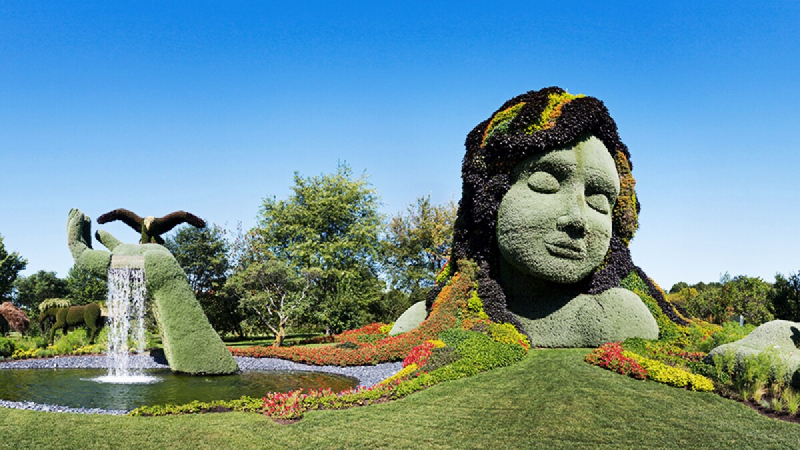
afar.com 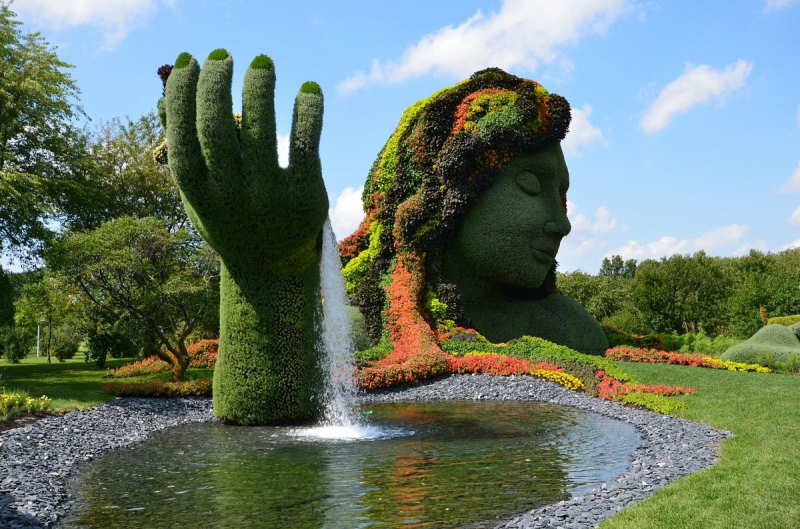
tripadvisor.com -
The Majorelle Garden in Marrakech, Morocco, is a botanical garden and artist's landscape garden. It was built over nearly forty years by the French Orientalist artist Jacques Majorelle, beginning in 1923, and includes a Cubist home designed by the French architect Paul Sinoir in the 1930s. From 1923 until their divorce in the 1950s, the artist and his wife lived on the property. The home was purchased in the 1980s by fashion designers Yves Saint-Laurent and Pierre Bergé, who sought to repair it. The garden and villa complex are now open to the public. The Berber Museum is housed in the villa, while the Yves Saint Laurent Museum opened nearby in 2017.
The gardens and buildings create a complex, with specialized buildings housing museums and exhibitions of interest to visitors. The gardens, which span two and a half acres and include a significant collection of cacti and sculptures, are open to the public on a daily basis. The garden complex is still being built. The gardens' profits are utilized to fund new developments. The Yves Saint Laurent Museum opens to the public in October 2017 as a monument to the designer's heritage and his ties to Marrakech. The gardens are a prominent tourist attraction in Marrakech, attracting over 700,000 people each year. The garden is home to around 15 indigenous North African bird species. It contains numerous fountains and an impressive collection of cacti.Founded: in 1923
Location: Rue Yves Saint Laurent, Gueliz, 40090 Marrakesh, MoroccoLand area: one hectare (two acres)
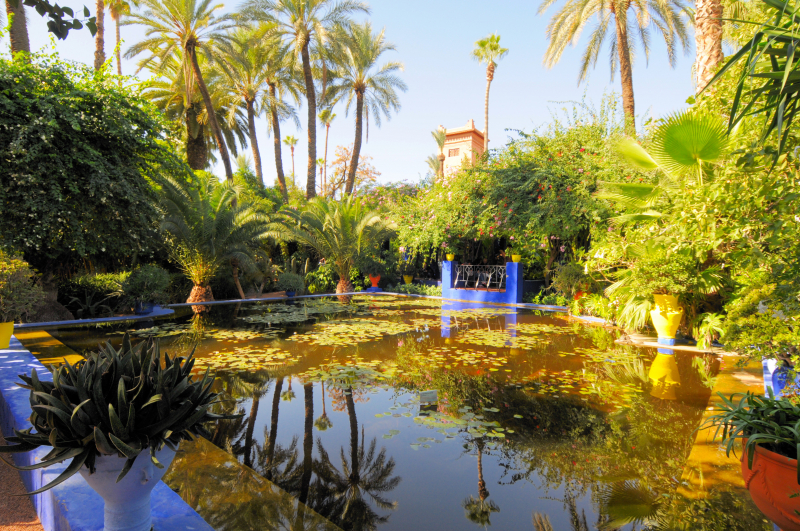
en.wikipedia.org 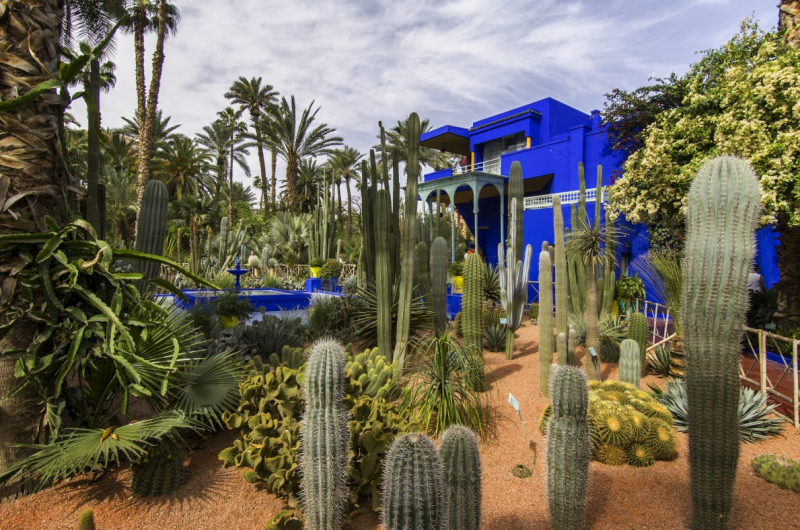
lonelyplanet.com -
The Rio de Janeiro Botanical Garden, one of the best botanical gardens in the world, is located in the Jardim Botânico district of Rio de Janeiro's South Zone. The Botanical Garden displays a wide range of Brazilian and international flora. There are around 6,500 species (some of which are endangered) spread across an area of 54 hectares (130 acres), as well as multiple greenhouses. The garden also has historical, cultural, and archaeological monuments. There is a significant research facility, which has the most comprehensive botany library in the country, with over 32,000 volumes.
King John VI of Portugal established it in 1808. The garden, which was originally meant for the acclimatization of spices such as nutmeg, pepper, and cinnamon imported from the West Indies, opened to the public in 1822 and is now open during daylight hours every day except December 25 and January 1.
The 140-hectare (350-acre) park is located at the foot of Corcovado Mountain, well below the right arm of Christ the Redeemer's monument, and has over 6,000 distinct types of tropical and subtropical plants and trees, including 900 different palm tree varieties. The Avenue of Royal Palms is a 750-meter (2,460-foot) line of 134 palms that leads from the gardens' entrance. All of these palms descended from a single tree, the Palma Mater, which was long ago devastated by lightning. Only around 40% of the park is developed, with the rest being Atlantic Forest growing up in the Corcovado mountains. UNESCO classified the park as a biosphere reserve in 1992, and it is protected by the Patrimônio Histórico e Artistico Nacional.
Bromeliads, orchids, carnivorous plants, and cacti are among the vegetation found in the gardens. These include Brazil's largest botanical library, dried fruit collections, unusual Brazilian flora, and numerous pictures. The painted cast-iron Fountain of the Muses was produced in Derby, UK, and was installed as part of the landscaping by English painter John Tydall at Henrique Lage's mansion in Largo da Lapa until 1895.
The park is home to 140 bird species, many of which have become habituated to humans and are thus more easier to view than in the wild. The channel-billed toucan, rusty-margined guan, slaty-breasted wood rail, and the endangered indigenous white-necked hawk are among them. The Botanical Gardens are also home to capuchin monkeys and tufted-eared marmosets.
Founded: June 13, 1808
Location: Rio de Janeiro, Brazil
Land area: 54 hectares (130 acres)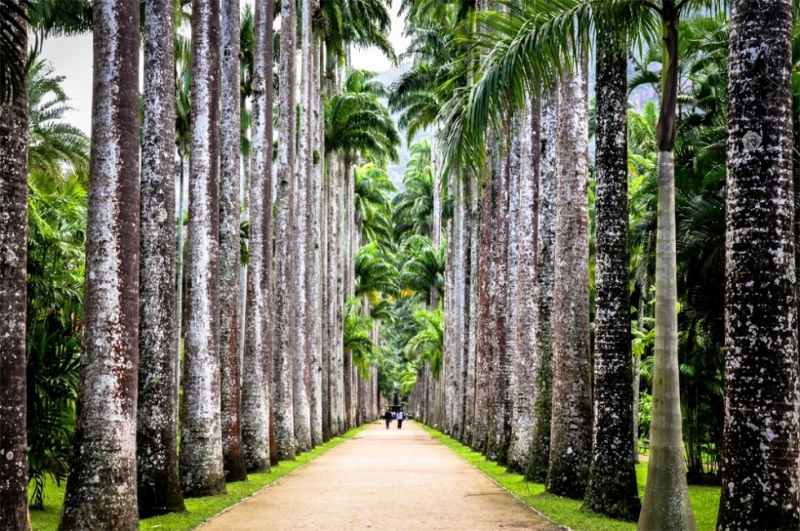
pandotrip.com 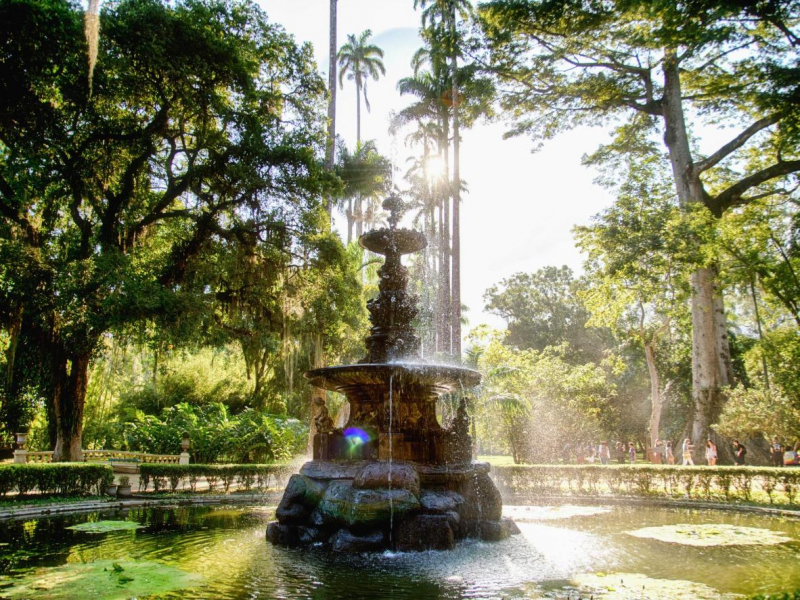
booking.com -
The Adelaide Botanic Garden is a 51-hectare (130-acre) public garden located in the Adelaide Park Lands, northeast of the Adelaide city center. It consists of a gated garden on North Terrace (between Lot Fourteen, the former Royal Adelaide Hospital, and the National Wine Centre) and the Botanic Park behind it.
The South Australian Agricultural and Horticultural Society (founded in 1842) and other organizations persisted in their efforts to establish a public garden. The general public was aware of the economic and scientific advantages of such a garden, which had already been seen elsewhere in the British Empire. The Society and George William Francis, who had begun appealing to Governor Sir Henry Young soon after his arrival in 1849 to construct the garden, recommended the current location to the government in 1854, and Francis was named manager of the garden in 1855.
The Legislative Council eventually accepted the site in January 1855, and the Garden opened to the public on October 4, 1857. The Botanic Garden Act of 1860 formed the Board of Governors, with Francis as Director. The current Botanic Garden, Botanic Park, and Adelaide Zoo were all part of the property at the time.
Opened: in 1857
Location: Adelaide, South Australia
Area: 51 hectares (130 acres)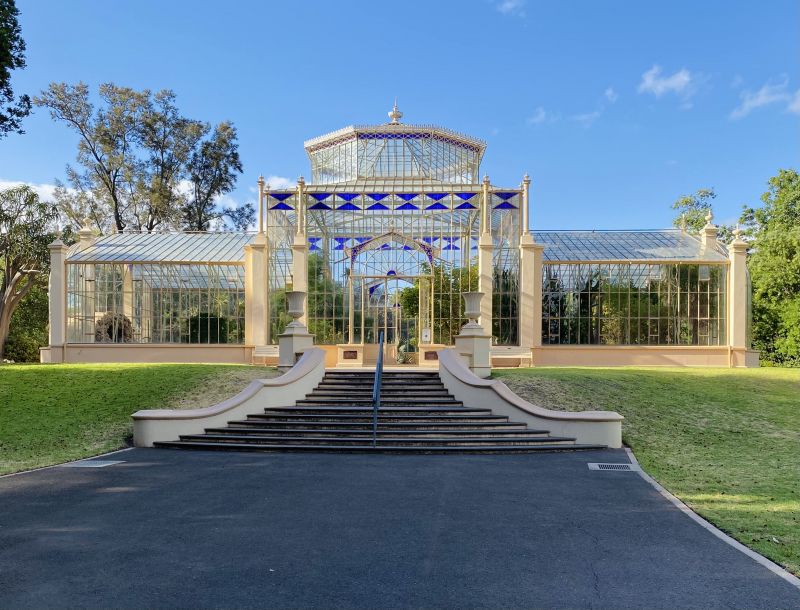
en.wikipedia.org 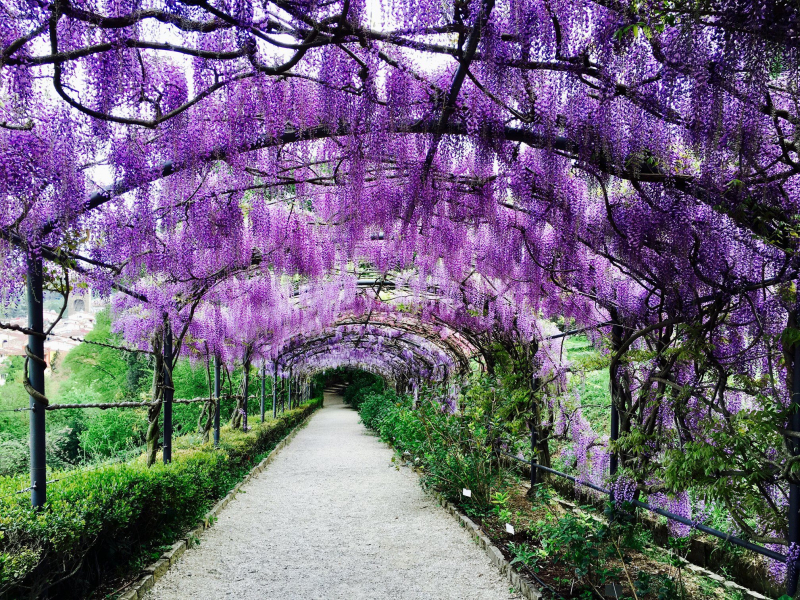
feelflorence.it -
Kew Gardens is a botanic garden in southwest London that holds the world's most extensive and diversified botanical and mycological collections. Its living collections include part of the 27,000 taxa curated by Royal Botanic Gardens, Kew, and the herbarium, one of the largest in the world, with over 8.5 million preserved plant and fungus specimens. The library has around 750,000 books, and the pictures collection has over 175,000 prints and drawings of plants. It is a World Heritage Site and one of London's most popular tourist attractions.
The Kew site, which was formally established in 1759, but can be traced back to Henry, Lord Capell of Tewkesbury's exotic garden at Kew Park consists of 132 hectares (330 acres) of gardens and botanical glasshouses, four Grade I listed buildings, and 36 Grade II listed structures, all set in an internationally significant landscape. The Register of Historic Parks and Gardens classifies it as Grade I.
The Royal Botanic Gardens, Kew, along with Wakehurst Botanic Gardens in Sussex, are managed by the Royal Botanic Gardens, Kew, an internationally important botanical research and education institution that employs over 1,100 people and is a non-departmental public body sponsored by the Department for Environment, Food, and Rural Affairs.
Opened: 1759
Location: London, Borough of Richmond upon Thames, England
Area: 121 hectares (300 acres)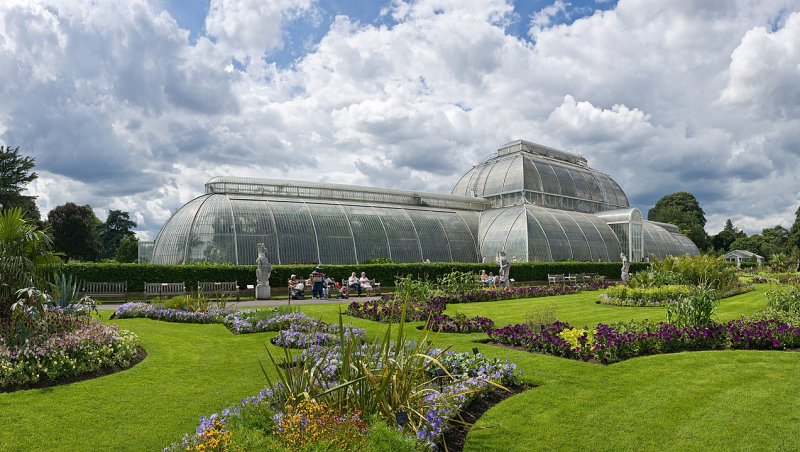
en.wikipedia.org 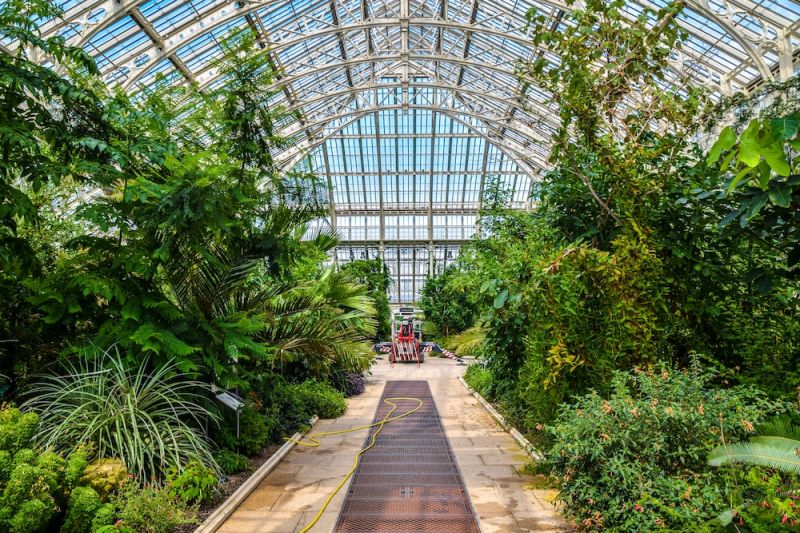
unsplash.com -
A small number of local individuals grew interested in preserving the vulnerable desert ecosystem in the 1930s. Gustaf Starck, a Swedish botanist, discovered like-minded residents by placing a sign that said, "Save the desert," with an arrow pointing to his house. They founded the Arizona Cactus and Native Flora Society (ACNFS) in April 1934 to finance a botanical garden to promote awareness, admiration, and promotion of the uniqueness of the world's deserts, notably the local Sonoran Desert. Gertrude Webster eventually contributed her enthusiasm, connections, and financial backing to the establishment of the botanical garden in Papago Park. Margaret Bell Douglas also contributed by contributing 1,500 specimens to the herbarium.
The Desert Botanical Garden is now a 140-acre (57 ha) botanical garden in Papago Park, 1201 N. Galvin Parkway, Phoenix, Arizona. Founded in 1937 by the Arizona Cactus and Native Flora Society and moved to this location in 1939, the garden today comprises over 50,000 plants in over 4,000 taxa, one-third of which are native to the area, including 379 rare, vulnerable, or endangered species.
Special mention should be made of the extensive collections of agave (4,026 plants in 248 taxa) and cactus (13,973 plants in 1,320 taxa), particularly the Opuntia subfamily. Shade shelters protect plants from less harsh climate conditions. It focuses on plants suited to desert climates and includes collections from Australia, Baja California, and South America. A mesquite bosque, semi-desert grassland, and upland chaparral are also represented.
Founded: 1939
Location: Phoenix, Arizona, US
Area: 140 acres (57 ha)
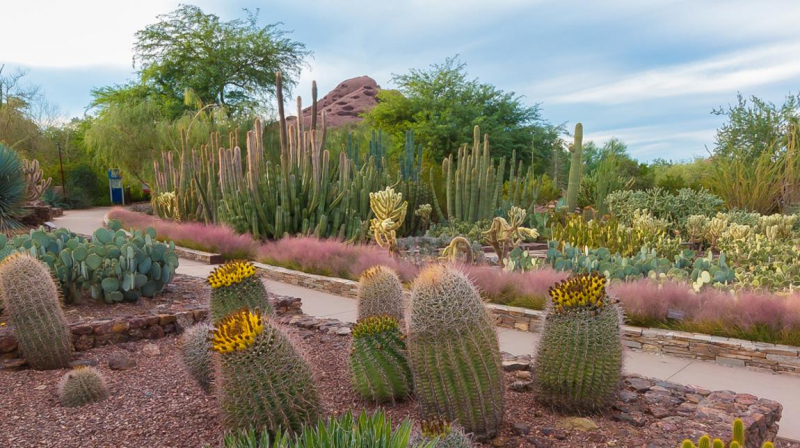
experiencescottsdale.com 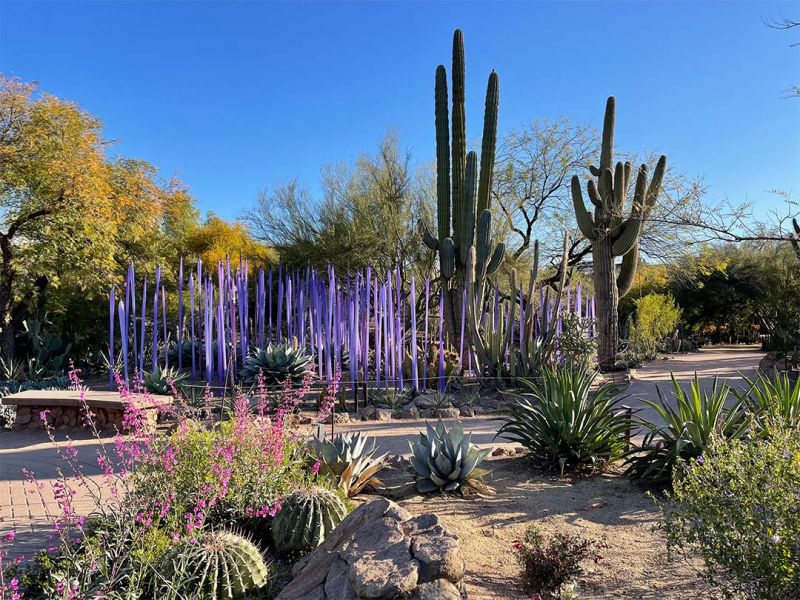
dbg.org -
The Joaquin Antonio Uribe Botanical Garden of Medellín, often known as the Botanical Garden of Medellín, is a 14-hectare botanical garden in Medellín, Colombia. The botanical garden contains 4,500 flowers and 139 bird species. It houses an important orchid collection in an architectural area known as the "Orchideorama."
Lorenzo Castro and Ana Elvira Vélez created the botanical garden's entry pavilion. There is a butterfly house, a cactus garden, exhibition rooms, a library, and a pond in the garden. A plan to build an extra pavilion was denied, and a competition for local architects to design a new structure for the park was created. It's a wood meshwork canopy with ten hexagonal flower-tree structures that collect rainfall and serve as a home for an orchid collection and butterfly reserves.
The property now covered by the botanical garden was formerly a farm known as The Bathhouse of Eden in the late nineteenth century. Mr. Victor Arango originally owned the land, and then his sisters and family were mentioned on the title. Due to high crime rates in the region, the garden was temporarily closed. A plan was developed to demolish the gardens, however, this was abandoned in favor of park renovations. When the facilities were expanded to include a considerably bigger collection of plant species, an auditorium, library, museum, and spacious dining rooms for tourists, it was given the name Joaquín Antonio Uribe Botanical Garden in 1972.
Founded: 1972
Location: Medellín, Colombia
Area: 14-hectare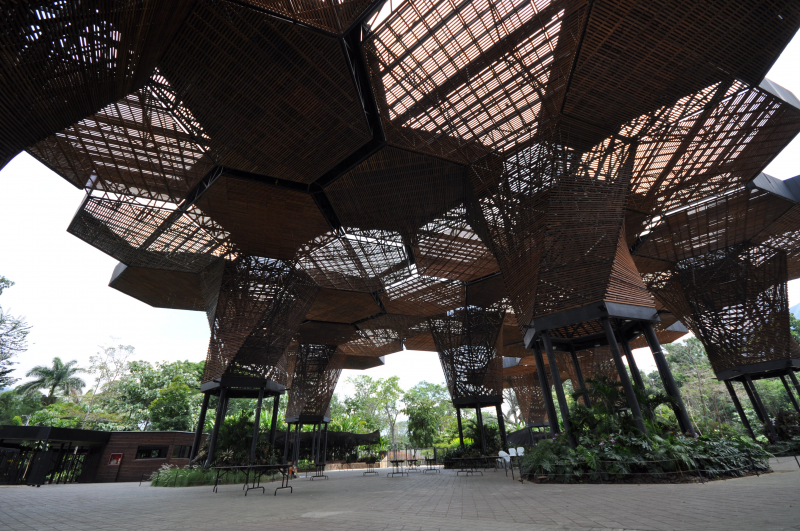
en.wikipedia.org 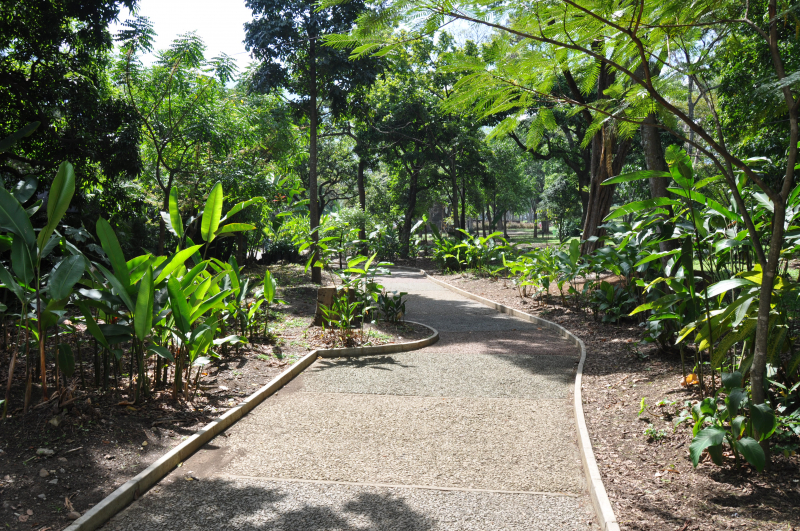
commons.wikimedia.org















